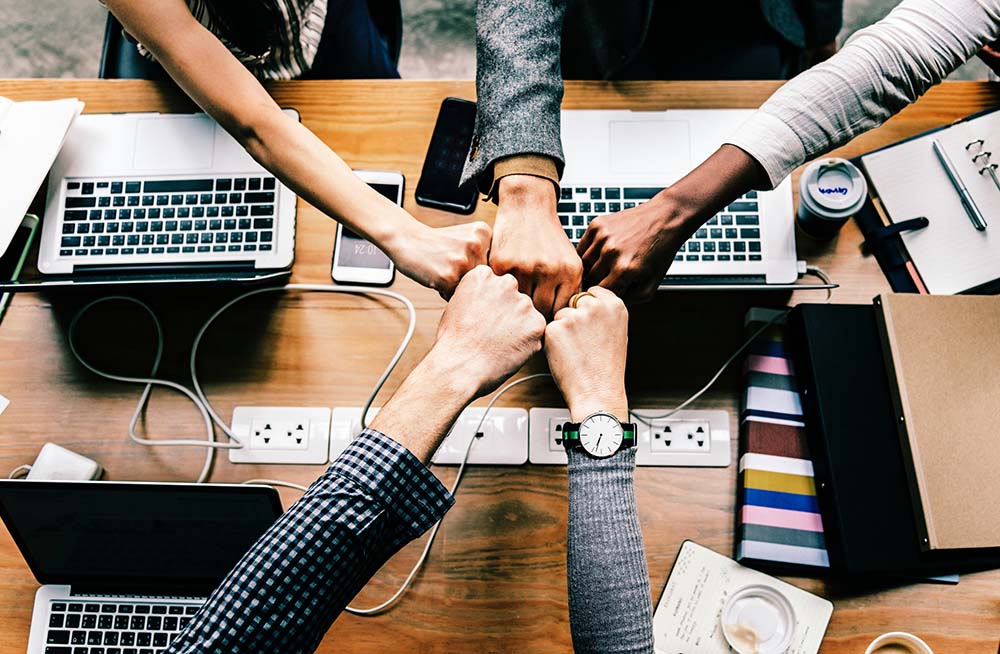
If you are getting back to “office normal” after the Covid-19 pandemic, one of the many changes may be a rewritten dress code.
Many employers realize that a relaxed work environment has become an important perk, especially for those employees who worked remotely for any length of time.
With all this change, nobody wants to be the guy walking into work getting all the looks for all the wrong reasons. And every office has at least one of those guys who can’t seem to grasp what’s going on around them. The pandemic has not changed that, nor has it changed the fact that you are judged, in part, by the way you dress.
Business casual, for all its good intentions, continues to be a mystery for many businesses. There is no “one size fits all” approach, but there are several overarching guidelines that can help you navigate through a post-pandemic dress code in the workplace.
We’re going to share with you how to put together a flexible collection of pieces that will help you stand out in all the right ways at the office.
If you’re a business owner, we’ve included a sample business casual dress code so you can see that it’s not that daunting. What is daunting for many businesses is enforcing a dress code. The key is to not make it onerous and position it as a benefit to keep your employees happy.
- How Does Custom-Made Fit into a Man’s Business Casual Wardrobe?
- What You Need to Know About Men’s Business Casual.
- Color Coordination: A Small Detail with a Big Impact.
- How to Master Men’s Business Casual Attire.
- Know Your Company’s Business Casual Dress Code.
- Creating a Dress Code for Your Office.
- Appropriate Business Casual When Meeting with a Client.
- How to Look Great in Business Casual if You’re Overweight.
- Shirts: To Tuck or Untuck?
- How Can I Build a Men’s Business Casual Wardrobe on a Budget?
- Can I Wear Jeans for Business Casual?
- Custom Clothing Makes Business Casual Easy.
How Does Custom-Made Fit into a Man’s Business Casual Wardrobe?
It fits like a glove.
More than 80% of my business is custom and has been for more than 30 years. While we still sell a lot of suits, our custom sport coat and trouser business has exploded, and most of that is because of relaxed dress codes at the office.
Just recently, a friend who is an attorney in a large law firm told me they have moved to business casual full-time rather than just Fridays. Who would have ever predicted the movement would break into the legal industry?
Because of the trend to business casual, my business carries more ready-to-wear business casual clothing. But the men that believe how they look at the office directly impacts how others perceive them continue to turn to custom-made suits, sport coats, trousers, shirts and shoes.
The short story: if you want to look absolutely your best in all situations the business puts you in, then take the custom-made path.
Also, if you have been working remotely and have packed on a few pounds over the last couple of years, those business casual clothes hibernating in your closet may fit more like a strait jacket than a glove. If you’re going back into the office after an extended time away, you really need to do a wardrobe check and see what fits and what does not.
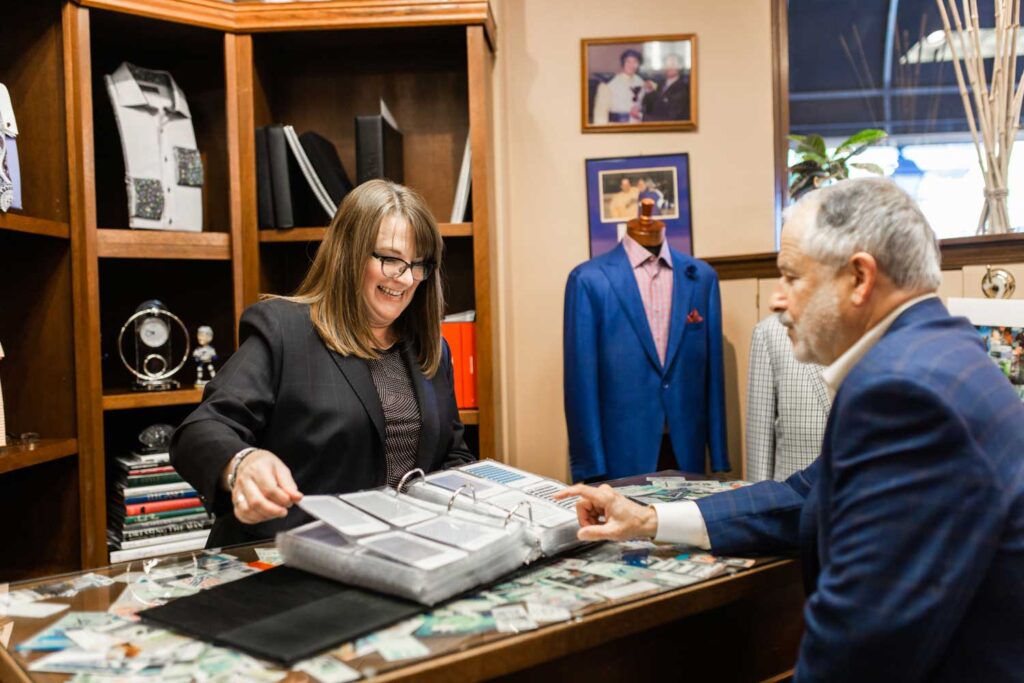
What You Need to Know About Men’s Business Casual
Every business has its own definition, of business casual, but after more than 30 years of watching how successful businessmen dress, we believe it leans more toward the “business” rather than the “casual”.
While life at the office has become less formal in just about every business, the importance of making a quality impression every day is still as important as ever. Business casual isn’t just throwing on a pair of jeans and a t-shirt and hoping for the best. There are certain nuances to mastering this look, without compromising your professionalism. Let’s take a deep dive into the components.
Fabrics: Combine Wool and Cotton for an Amazing Business Casual Wardrobe.
Business casual opens the door to a lot of interesting options when it comes to fabrics. That said, wool and cotton should be your primary focus for the core pieces in your business casual wardrobe.
Following are some thoughts on wool and cotton, and several other fabrics that will make piecing together a wardrobe a lot more fun.
Wool: Get to Know This Amazing Fabric.
Warm and insulative, yet breathable, wool isn’t just for the winter months.
Whether it’s a men’s blazer or sport coat made from Super 200 fabric, a handmade wool cardigan or a carefully tailored pair of wool pants, wool adds a touch of texture and classic refinement to any business casual ensemble.
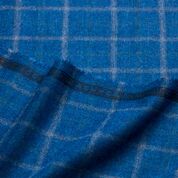
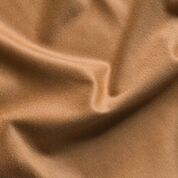
At Savile Row Custom Clothiers, wool is my fabric of choice for suits, sport coats and trousers. Its natural properties help the fabric shape to your body. Wool is also durable, and it is woven into many levels of quality from thick flannel to the finest worsted wool.
An important component of wool is how the industry defines its different grades. It’s called the Super Number and it defines the quality of the wool based on the thickness of each fiber. Super Numbers start at 80 and go to 250. Super 250 fabric is some of the finest wool in the world.
David Shockley’s Two Cents.
The Super Number, while important, isn’t the only consideration. Higher Super Numbers don’t always mean higher quality, but they almost always mean higher price. Don’t be afraid to ask questions.
Cotton: Let’s Call it King Cotton.
Like wool, cotton’s natural properties make it a comfortable and durable fabric. We always recommend customers go with 100% cotton shirts.
Another benefit of cotton is the wide variety of options. At the core of a cotton shirt is what’s called the “staple”, which defines the length of each strand of cotton. Longer strands—typically between 1 ¼” to 2 ¼”—are the strongest. Egyptian, Sea Island and Pima cotton are known for their long staples.
There are scores of weave types of cotton, for example, broadcloth, chambray, poplin, gingham and Oxford.
Corduroy: Make it Part of Your Wardrobe.
Feared by many for its bold texture, corduroy isn’t the first fabric many businessmen reach for, but it has a warm appeal that speaks to a vintage, scholarly look.
Though ideal for cooler months because of its thickness, corduroy jackets and pants work with a variety of shirt ensembles. We typically recommend pairing corduroy with a muted pattern or solid shirt, so as not to overwhelm the look.
Knitted: Sweaters are Great Addition for the Office.
Business casual attire opens the door to bring sweaters into the office, and the look is effortlessly attractive when paired with the right dress shirt and pants. Don’t be afraid to swap your jacket for a heavy knitted cardigan, or your dress shirt with a thin sweater.
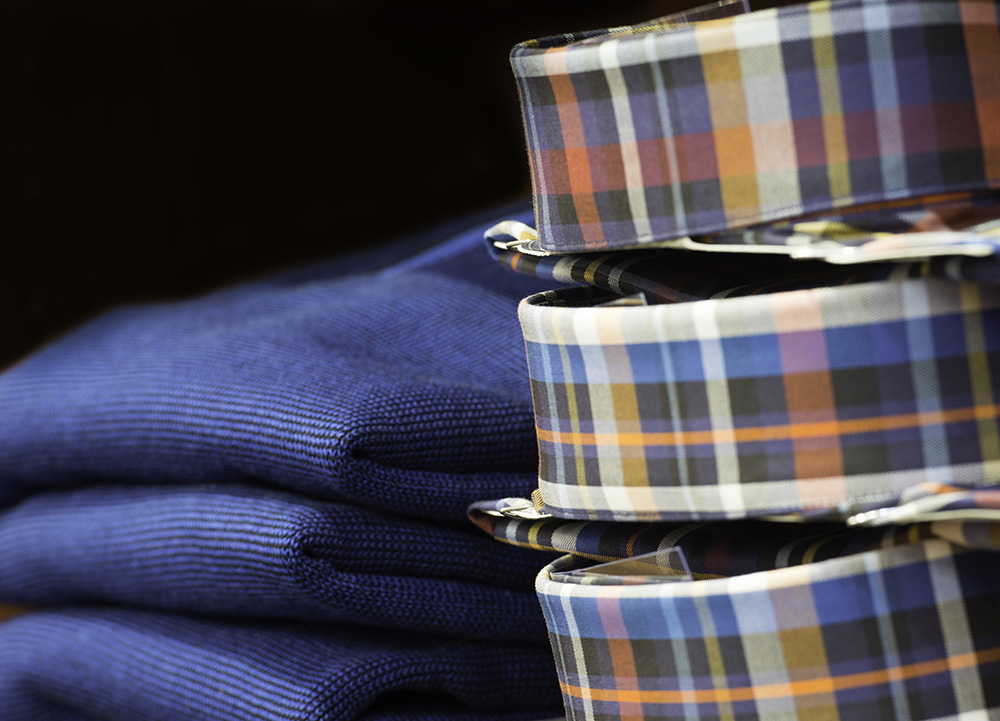
Gingham: Liven up Your Everyday Look.
Gingham is a great way to mix up your collection of shirts. While most often sold in checked patterns, GQ says the word gingham actually means striped. Go figure. Regardless, gingham is a popular choice for a casual look that can easily fit into a business casual setting. Pair it with a solid colored jacket in a complementary tone for a bold, stylish, stand-out look in the office.
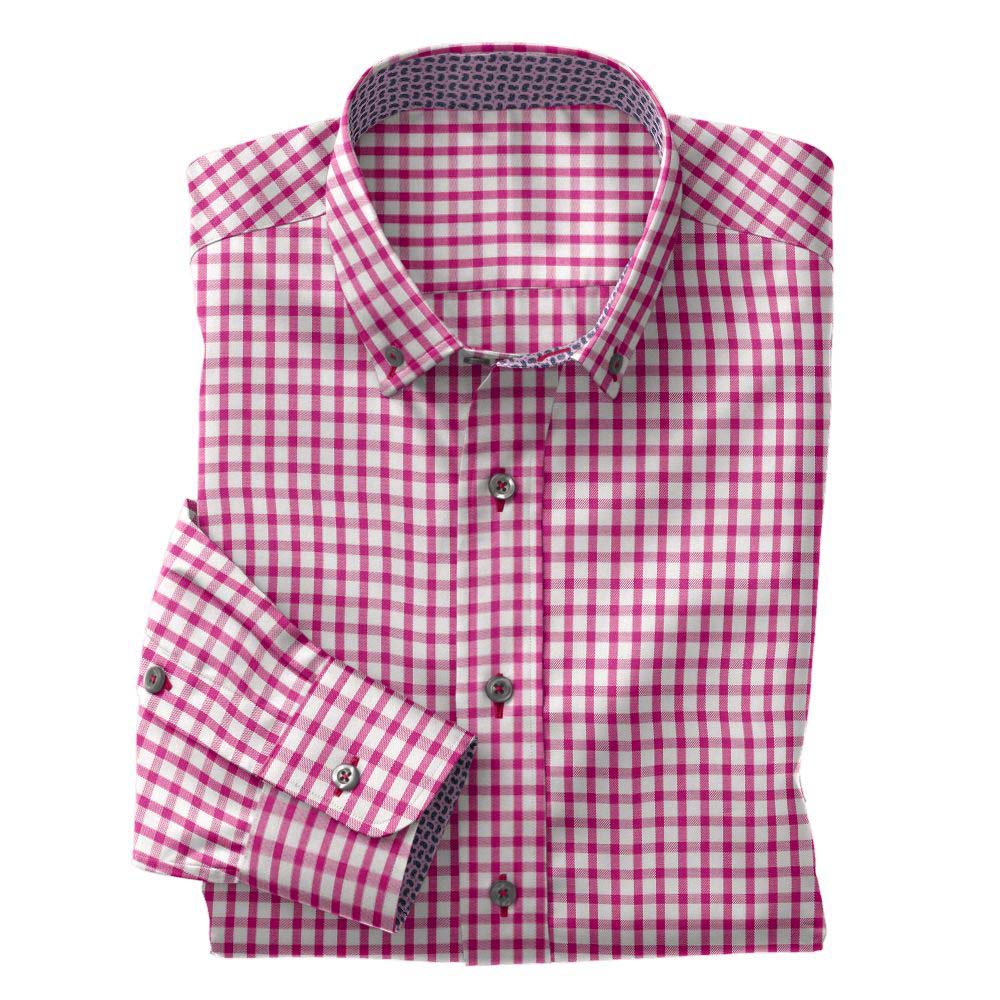
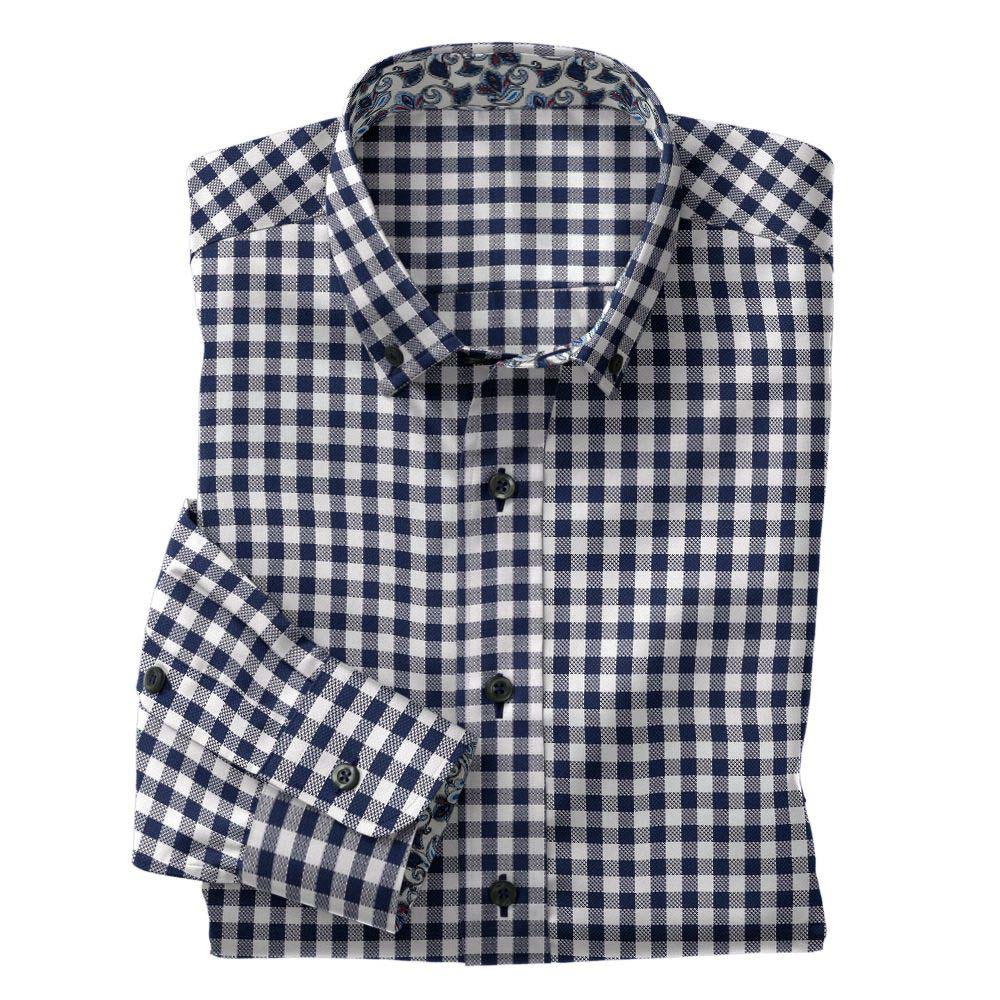
Tweed: It’s Back and Worth a Look.
Tweed is a durable, moisture-resistant fabric. Rough to the touch, tweed is comprised of wool fibers, sometimes dyed to create varying patterns in the fabric.
Tweed was in high fashion in the early 1900s in Britain and saw a rise in popularity in the United States in the 1960s and has once again risen back into fashion. Add a vintage, dapper twist to your business casual attire, and bring a tweed jacket into the mix to really shake things up.
Denim: Everyone Wants to Know if it’s OK.
Unless your company’s dress code specifically addresses jeans, we would urge you to be careful including jeans in your wardrobe.
When pairing denim with business casual attire, always wear dark washes, and ensure that the hem of the pant leg falls appropriately at the laces of your shoes. There’s nothing quite like a perfectly tailored pair of jeans with a killer sport coat to bring together a bold business casual look.
Color Coordination: A Small Detail with a Big Impact.
One of the most challenging parts of getting the business casual look right for men is color coordination. It may sound odd, but we find business casual to be more difficult to coordinate. With a suit ensemble, completing the look is the relatively simple task of selecting a shirt and tie, but without a matching jacket and pants, there’s a lot left for you to figure out.
We suggest keeping colors muted and neutral, and only employ one vivid color, such as red or blue to avoid creating a loud, overwhelming look. Matching tones are more important than coordinating exact shades, so work within color groups to keep your look fresh and coordinated.
Cool Tones
One thing that’s incredibly helpful with identifying how well a set of colors coordinates is by pinpointing their tone on the color wheel. A custom clothier can assist you with this process.
Cool tones are going to have bluish undertones. Examples include blues, greens, and purples. These colors typically complement fair complexions with pink undertones.
Warm Tones
Warm tones are colors that fall into the reds, oranges, and yellows range. These are often deep jewel tones that complement darker and olive complexions.
How to Master Men’s Business Casual Attire.
It’s hard to believe but pulling together a business casual wardrobe can be more difficult than the traditional formal business clothing.
There are more options, which while creating more decisions also creates an opportunity to show a bit of creativity and, if you’re so inclined, flair.
Let’s break down each component.
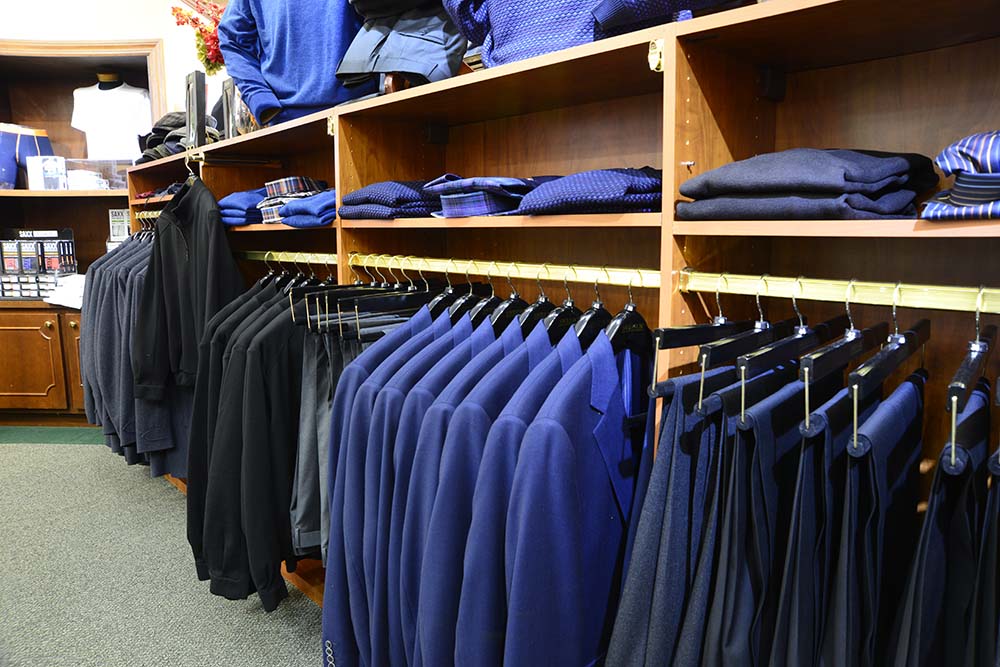
Jackets: Shorter, More Comfortable… What More Can You Ask?
The jacket, blazer or sport coat (whichever you prefer to call it) is at the top of the business casual gene pool. A so-so shirt and pants combination can be transformed with the right jacket.
Business casual is having quite an impact on jacket styles. The traditional sport coat is still the style of choice, especially for businessmen. It communicates to everyone you are serious about how you look.
However, there is a fast-growing segment of men in business—typically younger—who are pushing jacket styles more informal. We call it a “swacket.” Style-wise, it is a cross between a sweater and a jacket. It uses jacket fabrics and retains the general construction characteristics of a jacket with two major differences: there is very little, sometimes no padding in the shoulders, which allows it to hang more like a sweater, and it is shorter, often falling only a few inches below the waist. It’s a more relaxed look that is really catching on.
As business casual evolves, men are trying other options outside of the conventional jacket, including trim-fitting sweaters and cardigans. It is a versatile look and striking with the right color coordination.
David Shockley’s Two Cents:
Start with two jackets: one solid black sport coat or jacket, and one patterned with red, gray and black. This will allow you to have both solid and patterned pants, giving you more options to mix and match.
Shirts: So Many Choices, So Little Time.
Both solid and patterned shirts work with a business casual outfit, so long as the rest of the outfit is somewhat muted. Don’t be afraid of bold patterns but use them strategically.
Our customers lean toward softer collars and button-downs with either exposed or hidden buttons. An Oxford weave with cotton is a great option versus some of the more expensive cottons like Egyptian and Sea Island.
Another great option is a polo, which can look good by itself or under a jacket.
What about t-shirts? We tell clients this is where they should buy up, as in finding shirts with a substantial neckline made from high quality cotton, such as pima.
Don’t forget the buttons when selecting a business casual shirt, especially now that ties are disappearing. And, for the more adventurous, manufacturers have really stepped up the button options. Have some fun.
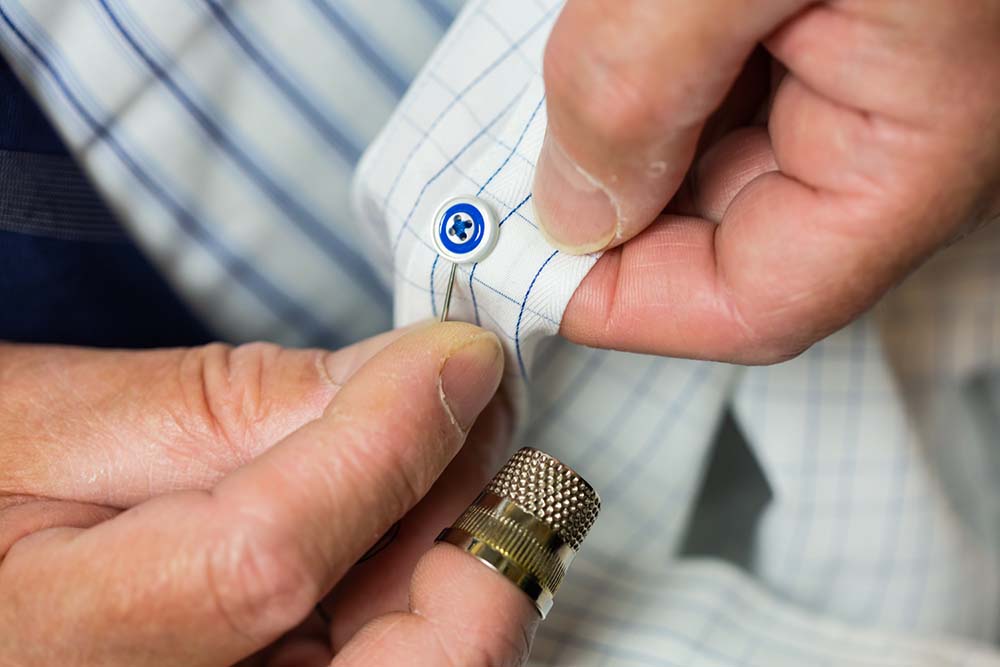
Aside from collared shirts, you can also sport a thin sweater or crisp t-shirt under your jacket. Keep in mind that if you take your jacket off, you’re going to be walking around in slacks and a t-shirt; a little planning is critical with this look.
Savile Row Custom Clothiers created a guide to building a custom shirt. It breaks down the options to help you create shirts that will fit perfectly and fit the impression you’re trying to create at the office.
David Shockley’s Two Cents:
This is where you can have the most fun. It’s also where you need the numbers. I recommend having 14 shirts with a mix of solids and patterns that will allow you to dress down or up, depending on the occasion. Many of our customers go through more than one shirt a day based on their schedule. With 14 you have half at the cleaners and half in the closet. I know 14 sounds like a lot, but they go fast when your days are jam-packed with meetings and activities.
Pants: Not So Exciting, but Critical to Your Overall Look.
Pants have gone through quite a change in style in the last few years. While pleated pants were the style for a couple of decades, they are being given a run for their money by flat-front pants. Our younger customers will have their flat-front pants cut both trimmer and shorter, a look I’m sure you see a lot at your office today. Yet, pants remain more the steak than the sizzle when it comes to business casual.
Khakis and chinos are the safe play for typical days at the office and look great with the right jacket pairing. They are typically best for warmer weather and the transition seasons of spring and fall.
Corduroys are a great option for cooler weather.
Also, make sure you include a pair or two of dress slacks—either ready to wear or customer—just in case a client comes calling. Savile Row Custom Clothiers has both options.
In some offices, jeans may be acceptable. If that’s the case with your company, make sure you always select dark wash denim, well cut, and damage-free (destroyed denim, trendy though it may be, still has no place in the office environment).
David Shockley’s Two Cents:
I recommend customers having at least 10 pairs of pants, which should cover options for both dressing up or down, and for warm and cold weather. Khakis, cords and a variety of wool slacks will have you ready for any situation the office demands.
Accessories: Get Creative.
What you accentuate with what you wear is every bit as important as the jacket that brings it all together.
Get creative with textures a bit more with your business casual accessories. Scarves are a welcome alternative to ties in the appropriate weather, and vintage leather messenger bags make for laptop cases with a bit more personality.
Bolder personalities even incorporate suspenders and hats into the mix, bringing back vintage looks with wool fedoras and the look of the well-groomed mid-century businessman.
And, don’t forget ties, socks and pocket squares (handkerchiefs)… the right choices will set you apart.
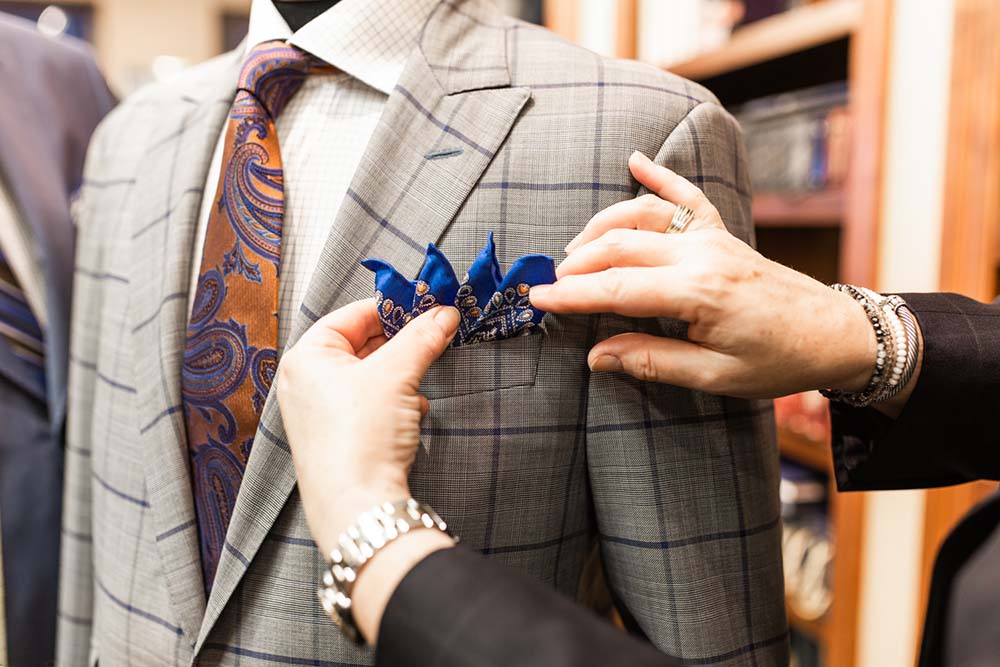
Know Your Company’s Business Casual Dress Code.
It’s your first day in a new job. Whatever you do, don’t just walk into your new office assuming you know what the HR guy meant by business casual. Every company has its own definition, and some are stricter than others.
Aside from knowing the dress code like the back of your hand, it also helps to get a sense of what the people around you are wearing. Look at your co-workers—especially those you consider competition—to get a feel for the acceptable styles. Executives are also a great source of ideas… emulate their look, and then make the style your own.
David Shockley’s Two Cents:
I’ve had several customers tell me that they “dress down” to the level of their clients. While I understand the concept and realize there may be situations where that can work, in general I think it’s an approach filled with risk. Any time a potential customer is considering hiring you and/or your company, they want to feel comfortable about not only your expertise, but how you present yourself. My recommendation is to dress up a notch or two above the customer… not to embarrass them, but to let them know you are serious about working with them.
Creating a Dress Code for Your Office.
You can’t please everyone. So, let’s be clear, in a post-pandemic world where the status quo for many has changed forever, the first person you need to please is yourself.
Talk to other owners in your community to see if they’ve implemented a dress code and if so, what are their rules/guidelines. Covid has simplified life in many ways, and people value a practical approach more than ever.
However, don’t buy into the belief that Covid has destroyed all sense of decorum in the workplace. You still need to look good to enhance your business credibility and a dress code, applied properly and thoughtfully, can help achieve that.
Our belief is a business casual dress code should lean more to business than casual. There are a few business types where shorts and flip-flops are the norm, but only a few.
Below is a sample business casual dress code from thebalancecareers.com, a great resource for career planning and ideas.
There’s another approach that General Motors uses. It is a two-word policy: Dress appropriately.
Sample Business Casual Dress Code Policy
(Company Name) expects employees to dress appropriately in business casual attire. Because our work environment serves customers, professional business casual attire is essential. Customers make decisions about the quality of our products and services based on their interaction with you.Consequently, business casual attire includes suits, pants, jackets, shirts, skirts and dresses that, while not formal, are appropriate for a business environment.
Examples of appropriate business attire include a polo shirt with pressed khaki pants, a sweater and a shirt with corduroy pants, a jacket with a skirt or slacks, and a blouse or a sweater with a skirt or pants. Pantsuits and sports jackets also fit the business casual work environment if they are not too formal.
Jeans, t-shirts, shirts without collars and footwear such as flip flops, sneakers, and sandals are not appropriate for business casual attire.
Employees are expected to demonstrate good judgment and professional taste. Use courtesy towards coworkers and your professional image to customers as the factors you use to assess whether you are dressing in business attire that is appropriate.
Employees who wear business attire that is deemed inappropriate in this workplace will be dealt with on an individual basis rather than subjecting all employees to a more stringent dress code for appropriate business attire.
David Shockley’s Two Cents:
The issue with dress codes is not the wording, but the enforcement. I hear a lot of complaints from my customers about their workplace; specifically, how people push the envelope when it comes to business casual. If you go to the trouble to create a policy, enforce it with vigor.
What is Appropriate Business Casual When Meeting with a Client?
Think of it this way: The client is always right, especially when it comes to dress codes.
Following are a few of our thoughts. Let me know what you think.
- Dress above the client. Our best advice is to always dress a notch or two above the client. What is a “notch” you ask? If the client is in khakis and polos, I recommend you wear a higher quality trouser, possibly in wool, with a casual collared shirt and a sport coat. You can always hang the coat on your chair. You’ll never get in trouble being a little over-dressed. And, don’t be fooled by client dress codes: sometimes senior executives will continue dressing more formally even with a business casual dress code. When in doubt, dress to the boss (check out our Businessman’s Guide to Buying a Custom Suit if you have to be prepared to dress up).
- Jeans or no jeans? First, go back to #1. Assuming you have some latitude because of the client’s dress code, be very, very careful. We tell all our clients to wear dark jeans that fit like slacks: not too tight and not too loose. The dark color helps soften the denim look.
- Shoes like a Marine. If you have shoes that can be shined, shine the heck out of them. If your shoes just need to be cleaned, clean the heck out of them. The biggest mistake men make in their wardrobe is ignoring their shoes. Bad shoes stick out like a sore toe.
- Fit like a hand in a glove. This one seems unnecessary to mention, but it’s shocking how many men walk around in clothes that don’t fit. Seriously, if it’s a big meeting and your sport coat has been in one too many battles, splurge on a new one.
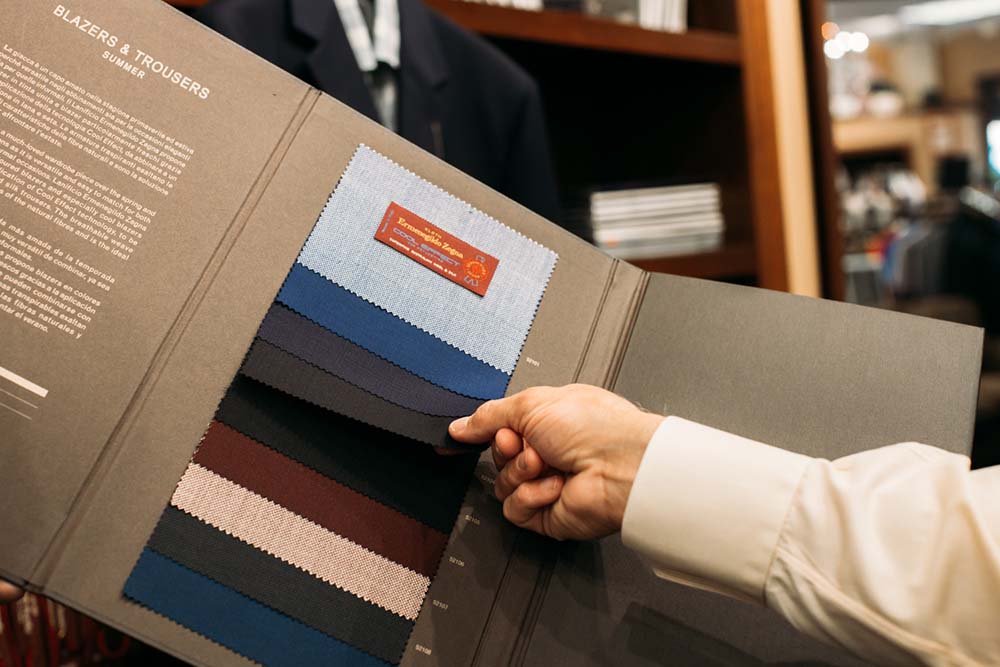
There was an excellent article on how to dress for a business meeting in Entrepreneur magazine a few years ago that is as helpful today as it was then.
David Shockley’s Two Cents:
This one is easy: If you’re going to make a mistake, make it dressing up, not down.
How to Look Great in Business Casual if You’re Overweight.
Beyond the stereotypes we’ve all heard about overweight people, there’s no question that it does take a bit of creativity and effort to find clothes that fit AND look good on you.
A resource we love to tap is the Art of Manliness (AOM) (www.artofmanliness.com). It is a great resource for men looking to improve in many areas, not just clothing. They recently published an article that did a fantastic job of identifying options for large men: The Large Man’s Guide to Sharp Dressing (to see more content you will have to join and, interestingly, you have to be approved to join).
Here are some of AOM’s easy style upgrades:
- Switch from belts to suspenders. Belts and large men just don’t mix well. As AOM says, putting a belt around a large stomach is like trying to fasten a collar around the lower third of a basketball.
- Buy dress shirts with spread collars. Broad faces and collars go together. These types of collars help keep your face proportional (and give you more room to tie a tie).
- Wear a hat. A stylish hat not only sends a message about how important it is to you to look good, it also adds a vertical component which will be especially helpful for shorter men.
- Sport well-groomed facial hair. A neatly-trimmed beard will help firm up a soft-faced man’s features.
- Wear large accessories. It’s all about proportion, whether it’s a large-faced watch or a hefty pen.
- Wear tailored shirts untucked. The untucked look has been trending up across all demographics. The simple style tweak of a flat plane of fabric over the stomach and below the belt can do wonders.
David Shockley’s Two Cents:
Savile Row has many long-time customers who continually fight their weight. It takes a tailor’s eye to ensure their custom clothes fit perfectly, but the type and quality of fabric they choose is also a critical component. Better fabric simply hangs better on the body.
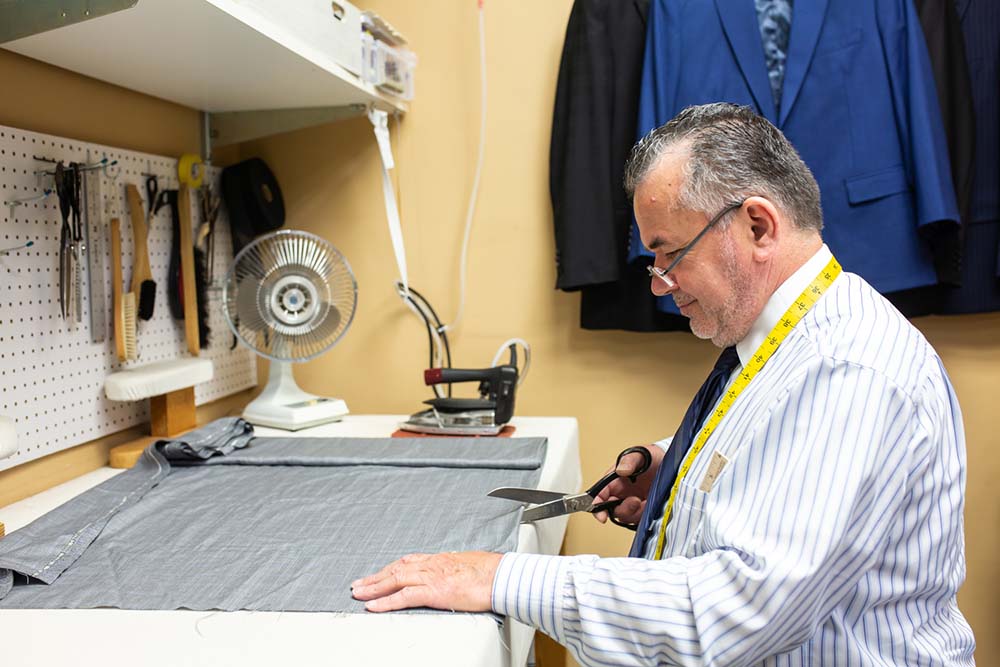
Shirts: To Tuck or Untuck?
A lot of men wear untucked shirts today. Most of them shouldn’t… not because they don’t look good, but because the shirt wasn’t designed to be untucked.
There are a few guidelines to untucked shirts:
- Be wary of shirts with uneven hems in the front and back… if they fall below the middle of your zipper the shirt is too long to untuck.
- Be sensitive to your surroundings. A night on the town is a great place for the untucked look. Funerals or the symphony… not so much.
- Here’s a big duh: make sure the shirt fits. You might as well save money and wear a shower curtain if you are intent on wearing a baggy shirt untucked
Many of our clients have a combination of tucked and the more casual untucked look.
Custom-made shirts are a great option to ensure both your tucked and untucked styles do what they are intended to do: make you look awesome.
For a deeper dive into the subject, check out our blog on whether to tuck or untuck.
How Can I Build a Men’s Business Casual Wardrobe on a Budget?
In no other business is the phrase ‘you get what you pay for’ more relevant than men’s clothing.
For whatever reason, men simply don’t pay as much attention to the details of their wardrobe as women. And, consequently, they make a LOT of mistakes.
So, for those with a limited budget, you will have to fight the urge to buy the least expensive option. Don’t be blinded by a deal. Make sure what you take home fits and looks how you want to look at the office.
Inexpensive clothes that fit well will look better than expensive clothes that don’t. Here are some tips:
- Start at the beginning: your closet. Take an inventory of everything you have for business casual.
- Try it on. Depending on your body type, five pounds up or down can impact how it fits and, consequently, how you look in it.
- See what you have that works with the new dress code. Take pics so you have them when you’re shopping.
- Start vanilla. Going with the basic solid colors isn’t a ton of fun, but it will give you the biggest bang for your buck from the standpoint of mixing and matching your pieces. And, you’ll never be accused of violating the dress code.
- Plan for dressing up your business casual. It’s inevitable you will meet with a client, and you must be prepared to dress to the client’s dress code. You need at least a sport coat, if not a suit, wool trousers and several quality cotton dress shirts.
- Don’t try to eat the elephant all at once. Get the basics first and give yourself options to mix and match the pieces.
David Shockley’s Two Cents:
Most men that have a limited budget for clothes worry too much about the bottom line and not enough about how they are going to look. Buy what you can afford but spend money on clothes that fit. Find a resource like a custom clothier that can help you stretch your budget with great looking and fitting clothes.
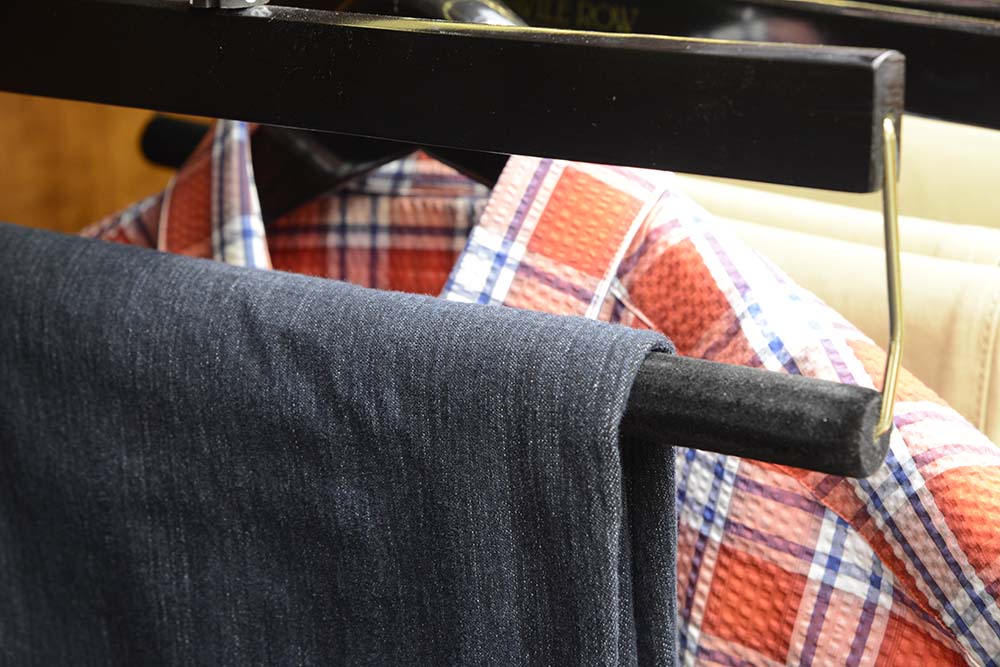
Can I Wear Jeans for Business Casual?
Most workplaces allow jeans… but they really don’t want to.
Jeans are one of the biggest clothing mistakes men make at work. Another of our favorite resources for men is Real Men Real Style (RMRS). They produced a great article on jeans in the workplace. Here are a few of their ideas:
- If ties are part of the dress code, jeans should not be.
- Dark jeans only. Keep them tailored to the slimmer side.
- Dress jeans up because they are automatically “casual”, not business casual.
- Best way to dress up jeans is with a jacket.
- Wear dress shirts (slimmer fitting) and keep them tucked.
- Invest in nice belts and shoes; they help dress up your jeans.
David Shockley’s Two Cents:
Stay away from the distressed/destroyed look (even if they are expensive). And, stay away from jeans with sewn patterns. What you don’t want to do with jeans is stand out.
Custom Clothing Makes Business Casual Easy.
Business casual is most often a struggle for men because it requires a kind of creative coordination that they typically don’t have with a suit.
For those who believe that what you wear is a critical part of your overall success, building your business casual closet with a custom clothier will give you quality clothes that fit perfectly. There’s only so much that tailoring can fix and coordinating the colors of your business casual attire is crucial to pulling the look off.
Our advice? Skip the department store shuffle and talk to a custom clothier about getting all the right pieces for your business casual wardrobe.

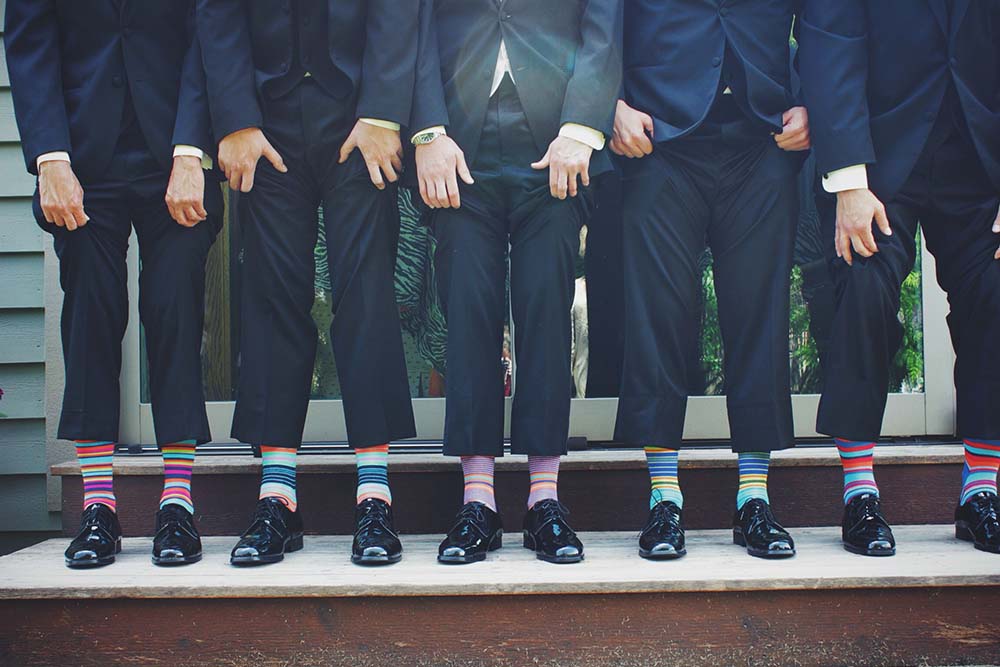
Recent Comments